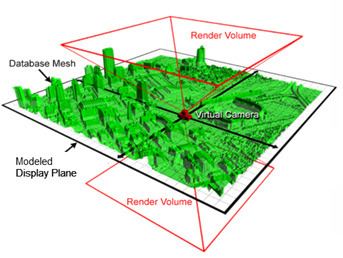 | ||
A hogel (a portmanteau of the words holographic and element) is a part of a light-field hologram, in particular a computer-generated one. In contrast to 2D pixels, hogels contain the direction and intensity of light rays from many perspectives, and is in essence what is referred to as a micro-image in plenoptic imaging terms. Synthetic hogels are typically rendered through double-frustum, oblique slice & dice or polygonal/voxel ray-tracing/ray-casting. Research into efficient generation and compression of hogels may allow holographic displays to become more widely available.
Map of H%C3%B6gel, Germany
An array of hogels can be used to reconstruct a light-field by emitting light through a microlens array or by reflective/transmissive photo-polymer holograms.
The term "hogel" was coined by Mark Lucente who first used it in his 1994 MIT Doctoral Thesis Dissertation.
More recent examples include a paper presented at the SMPTE 2nd Annual International Conference on Stereoscopic 3D for Media and Entertainment entitled "The First 20 Years of Holographic Video – and the Next 20", or in these recent book chapters: "Electronic Holography -- 20 Years of Interactive Spatial Imaging" in Handbook of Visual Display Technology , and "Computational Display Holography" in Holographic Imaging.
